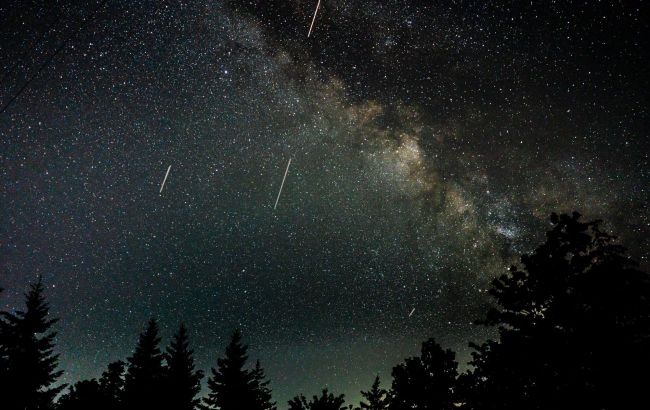Summer 2025 sky show: How to catch meteor shower and make a wish
 When to Watch the Meteor Showers in July 2025 (Photo: Freepik)
When to Watch the Meteor Showers in July 2025 (Photo: Freepik)
This summer, skywatchers will be treated to two meteor showers in July and August. First come the Delta Aquariids, followed by the famous Perseids that draw millions of spectators worldwide each year. If you dream of making a wish or simply admiring shooting stars, read on for the exact dates and best places in Ukraine where you can see them with the naked eye.
Delta Aquariids, July's 'tears' of Aquarius
The first meteor shower this July is the Delta Aquariids. It's named after the Aquarius constellation, from which the meteors appear to originate. This celestial event is active over a long period, but its peak falls at the end of July.
When to watch
The Delta Aquariids usually peak between July 28 and 30. The best time to watch is during the pre-dawn hours when the Aquarius constellation rises higher above the horizon.
The exact peak is the night of July 29 into July 30. The optimal viewing time is from 11:00 PM Kyiv time until dawn.
Features
This meteor shower is less intense than others. Under ideal conditions, you might see about 10 to 20 meteors per hour. Delta Aquariid meteors are often dimmer, but some leave long trails across the sky, adding a special charm to the show.
Origin
The Delta Aquariids are linked to comet 96P/Machholz, which leaves behind a trail of dust and tiny particles.
The best viewing spots: the Carpathians, Shatsky Lakes, Podilski Tovtry.
Perseids, August star rain
No doubt, the most anticipated meteor shower of the summer is the Perseids. Known for their high intensity and brightness, they're a favorite among amateur astronomers and millions of skywatchers around the globe. The radiant of this shower is located in the Perseus constellation.
When to watch
The Perseids are active from July 17 to August 28, but the peak falls on the nights of August 12-13. That's when you'll see the greatest number of shooting stars. The best time for viewing is after midnight until dawn.
Intensity
Under ideal conditions (a moonless night and distance from city lights), you may see 50 to 100 meteors per hour. Perseids often leave bright, long trails and even "fireballs"—very bright meteors that explode.
Origin
The Perseids are made up of dust left behind by the Swift-Tuttle comet (109P/Swift-Tuttle). Each year, Earth passes through this cloud of cosmic dust, and the particles burn up in the atmosphere, creating flashes of light.
Best locations for viewing: Polissia, northeastern Lviv region, Odesa region
How to prepare for watching meteor showers
To get the most out of this celestial experience, follow a few simple tips.
Choose location
Find a place as far as possible from city lights, which cause light pollution. The darker the sky, the more meteors you'll see.
Comfort
Bring a sleeping pad or folding chair, warm clothes (nights can be chilly even in summer), and hot tea or coffee.
Patience
Your eyes will need about 20-30 minutes to adjust to the dark. Be patient, and you'll be rewarded.
No equipment needed
You don't need telescopes or binoculars to enjoy a meteor shower. It's best to watch with the naked eye to take in as much of the sky as possible.
How to make a wish
- Watch the meteor as it flies and don't look away
- Silently form a clear and specific wish
- Don't tell your wish to anyone
These summer meteor showers are a perfect chance to break away from daily life, immerse yourself in the grandeur of space, and maybe make a wish on a falling star. Don't miss this spectacular celestial show!
Previously, we reported that a space mission to launch ashes into orbit ended in disaster.
Sources: NASA Meteor Watch, American Meteor Society, Space.com, EarthSky.org.

